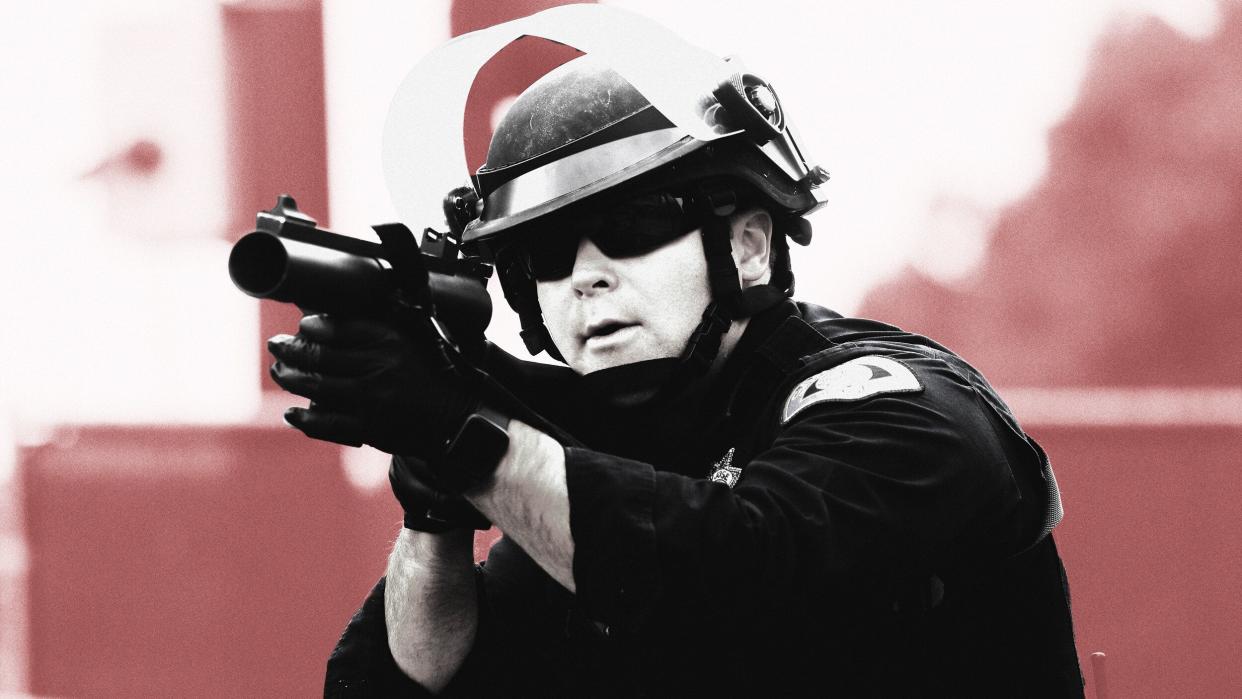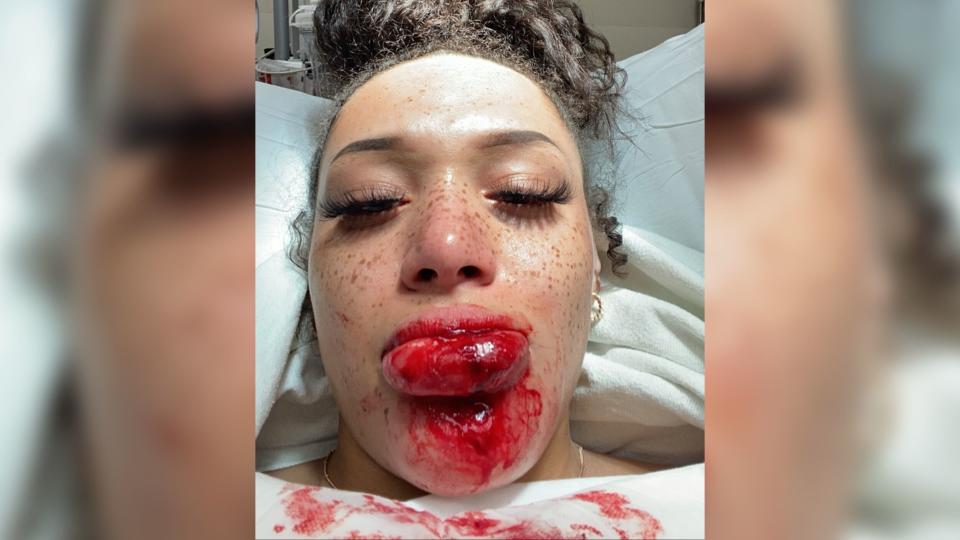Rubber Bullets Are Still Bullets

Amara Green wasn’t entirely sure what hit her.
The 19-year-old had been at a protest in downtown Minneapolis at around 8 p.m. on May 27. She was in the middle of a crowd across the street from the Minneapolis Police Department’s 3rd Precinct headquarters. All Green remembers is her boyfriend trying to push her out of the way as a flying object hit her bottom lip.
“There was this ringing in my ears,” Green said. “I knew my lip was gushing blood, but I didn’t know what was going on.”
Fellow protesters helped Green and her boyfriend push through the crowd to an area where medical volunteers could appraise her injury. She was told to get to the emergency room, because she was going to need stitches. (Warning: graphic photo below.)
“My lip and chin had both been busted open,” Green said. “While they sewed me up, they told me that my jaw may have shifted, and I would maybe need reconstructive surgery.”

The care will likely cost her thousands of dollars. Though she had previously been covered under her mother’s health insurance, her mom had recently lost her job. It wasn’t until a few days later that she learned her injury was from a “less lethal” weapon police had fired into the crowd: rubber bullets.
Rubber bullets are formally known as “kinetic impact projectiles,” and are not always made of rubber. Some are wood, plastic or even have a metal core. Rubber bullets have been used for decades to subdue riots, and are now being aimed at protesters, journalists and uninvolved bystanders as protests continue throughout the country over the deaths of George Floyd, Breonna Taylor and other victims of police brutality. And while researchers have known for years that “less lethal” can still be deadly, police units in the United States continue using them.
“To even use the word ‘safe’ is a misnomer,” said Ian Wittman, chief of emergency medicine at NYU Langone Hospital. “It is absolutely, unequivocally unsafe to use these...



